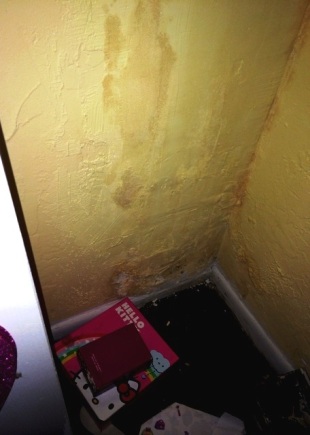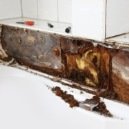Find a pre-screened local mold removal specialist Free Estimate
Find a Mold Specialist Now
Click or Call, Toll-Free 24/7
Mold in Apartments
We often receive emails asking about who is responsible for the cost of removing mold in apartments. Are landlords supposed to pay or are tenants responsible? As you might imagine, the cost can be significant (although it isn’t always, you might be surprised). We can give you some general information but the answer to this question will vary depending on a number of factors.
Who Pays to Remove Mold?
Mold removal can be costly. The financial responsibility for the cost of removing mold in rental home settings varies at times depending on the cause of the mold. In some cases, state law dictates the landlord’s responsibility with regard to things like mold removal. Sometimes people include clauses about responsibility for the cost of mold removal in written rental agreements or leases; keep in mind, though, that rental agreements cannot violate state law. If state law says landlords are responsible for removing mold in apartments, a rental agreement that says otherwise cannot be enforced.
Landlord – Landlords are usually responsible for maintaining an apartment or rental home, including things like keeping the roof in good repair and making sure pipes don’t leak. If mold develops as a result of something like a leaky pipe or a leaky roof, the landlord is typically responsible for the cost of mold removal.
Tenant – Tenants are usually responsible for the basic upkeep of an apartment or rental home. If a tenant does something like leave windows open during a rainstorm or fails to clean up a water spill, and mold results, the tenant will probably then be responsible for the cost of mold removal. However, in most states, the landlord is still responsible for maintaining a livable home free of health hazards, so he or she may be required to arrange for mold removal. The landlord can then charge the tenant for the cost of mold removal.
 Mold in Closet
Mold in ClosetProperty Owner’s Insurance – A landlord’s insurance may cover the cost of mold removal under certain circumstances. For instance, if the roof is damaged in a storm and the landlord’s insurance pays to repair that storm damage, and mold develops as a result of water damage caused by the storm, the insurance may also pay for the mold removal. If you own rental properly, read your insurance policy carefully to make sure you understand what is and is not covered. Contact your insurance agent if you have any questions.
Renter’s Insurance – A tenant’s renter’s insurance probably will not cover the cost of mold removal, at least not in most cases. Since renter’s insurance doesn’t cover things like structural damage to the home (the landlord’s insurance would cover that instead), it usually won’t cover mold removal. If you rent your home, though, read your renter’s insurance policy carefully to see exactly what it does and does not cover. If you don’t have renter’s insurance, we encourage you to purchase a policy. Talk to your insurance agent about the coverage options available to you.
For More Information about Responsibility For Mold in Apartments
For more information, you can contact an attorney in your state to learn about landlord and tenant rights and responsibilities. You can also contact your local department of health. You should also schedule a free consultation with a mold removal professional that is familiar with mold in rental home situations. He won’t be able to give you legal advice, but can visit the rental property, inspect the situation, and provide you with a written estimate of the cost to remove the mold. You’ll need a written estimate if you plan to ask someone else, be it landlord, tenant, or insurance company, to pay for the mold removal. For a list of qualified mold removal professionals near you, just follow the link.
Return From Mold In Apartments To Our What To Do About Mold Page
Free Home Inspection By A Mold Removal Specialist
Search This Website

Recent Articles
-
See Our 5 Recommended Mold Removal Companies in Covington, KY
Apr 16, 25 12:59 PM
-
See Our 5 Recommended Mold Removal Companies in Wheaton, IL
Jun 20, 24 10:33 AM
-
See Our 5 Recommended Mold Removal Companies in Aberdeen, SD
Oct 08, 21 04:05 PM




